[ENG]The Hotel Humboldt stupendous architectural work at 2200 meters high in Caracas [ESP] El Hotel Humboldt estupenda obra arquitectónica a 2200 metros de altura en Caracas
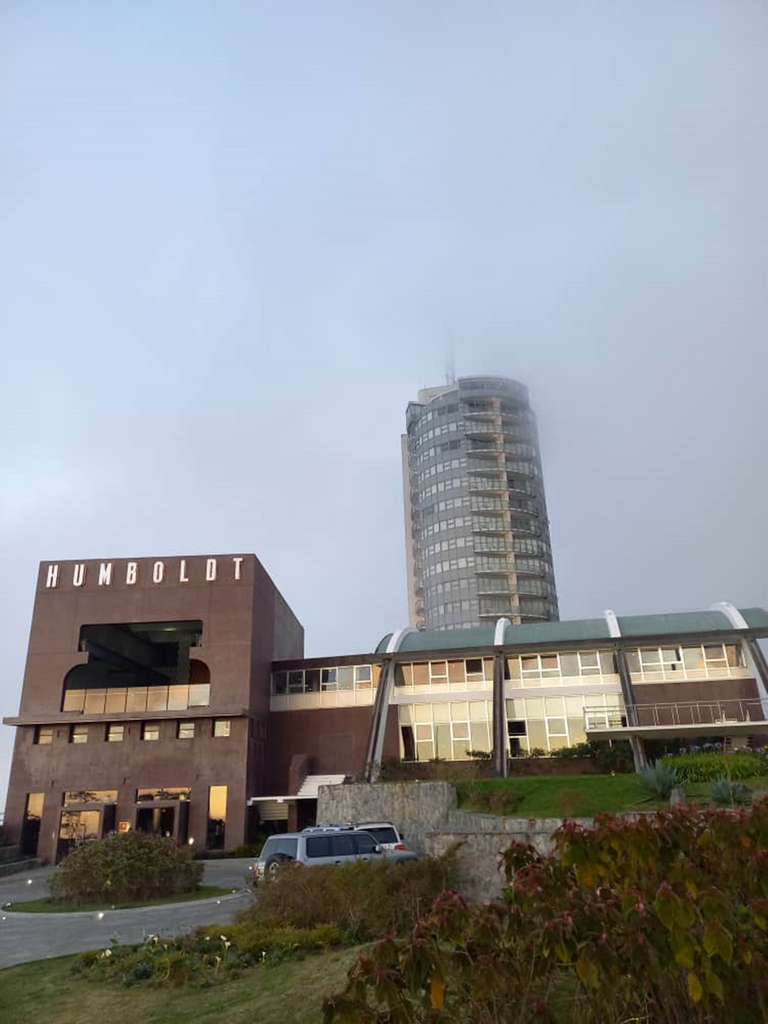
In January of this year, when the pandemic had subsided, my niece Myrel, her two children, and her fiancé visited the Hotel Humboldt. At the cable car station, located in the Maripérez urbanization, they began their journey in comfortable cabins for 20 minutes until they reached the top; As the section of the cable car, which should reach the hotel lobby, was not in operation, they had two options: board a "buggy" that continues to climb until reaching that impressive glass and aluminum structure: the Hotel Humboldt, or arrive on foot through a few meters of boulevard, option selected by my relatives. Upon arriving at the Hotel grounds, they found it, like most of the time, surrounded by thick clouds, which suddenly open up to give way to unimaginable views of the city and the Caribbean Sea. The majority of photos that I share with you were taken by my niece Myrel, I have only considered it pertinent to add a few photos from the internet that I consider to give a broader view of the building.
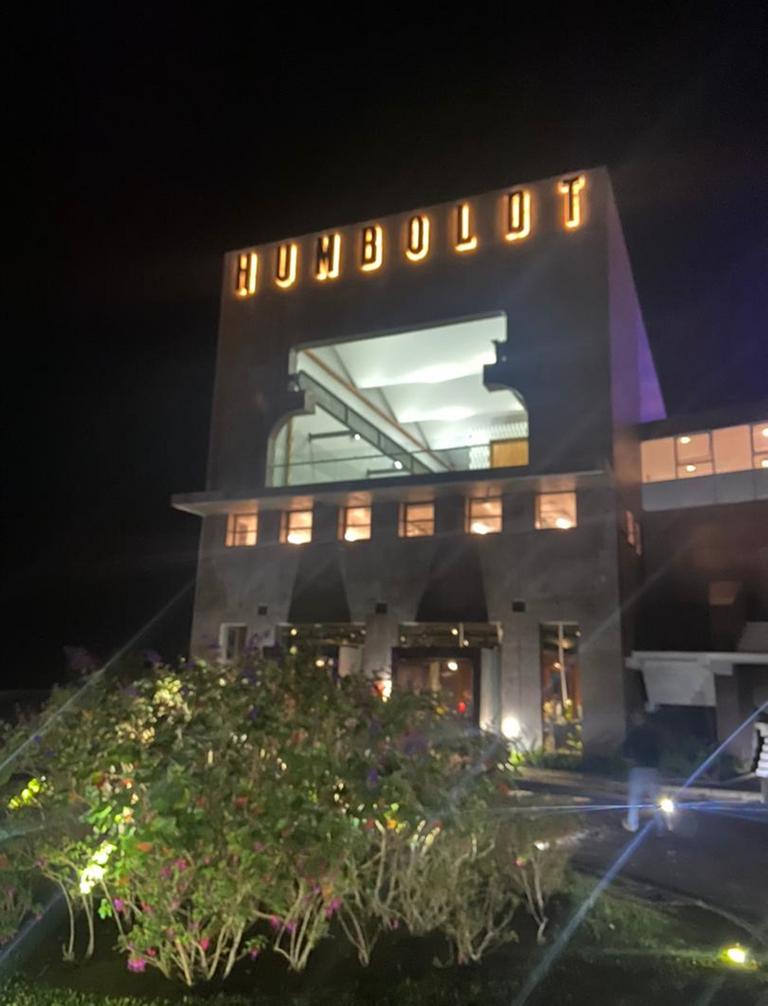
The jewel in the crown of Venezuelan architecture, from the beginning of the second half of the 20th century, is the Hotel Humboldt, built at more than 2,200 meters above sea level on the highest point of the Waraira Repano National Park (El Ávila), the mountain and a national park that surrounds the city of Caracas, which can be compared to a lighthouse from where you can see the city of Caracas to the north and the Caribbean Sea to the south and at the same time it can be seen from almost any point of the Capital and from the open sea.
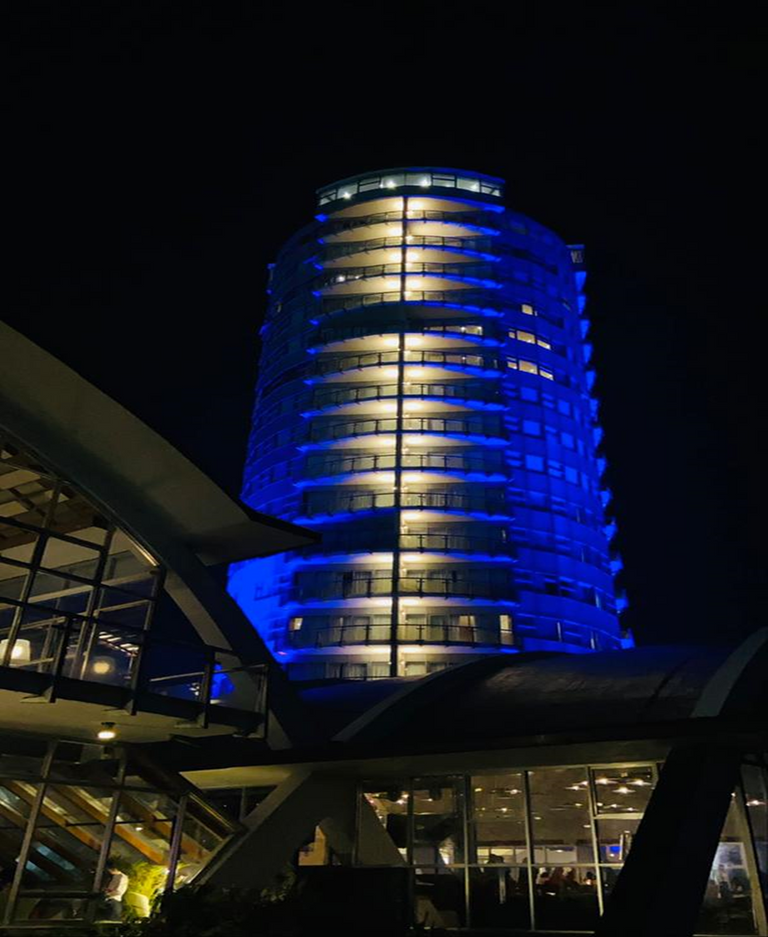
The work, begun and completed in 1956, was designed by the Venezuelan architect Tomás Sanabria, one of the disciples of functionalism at the Harvard School of Design, where he was a student of Walter Gropius, founder of the Bauhaus; his idea was to build a hotel complex not only with air-conditioned and comfortable rooms but also, taking advantage of the location, a space for fun and rest. It is necessary to point out that the same year in which the work was completed, the cable car was put into operation.

Sanabria, accompanied by the engineers Gustavo Larrazabal and Oscar Urreiztieta and a team of 600 people, achieved a marriage between history and technology whose son is this magnificent structure in the form of a cylindrical tower, which rises 60 meters, with 14 floors and 70 rooms and a bar with a 360-degree panoramic view. The engineer Urreiztieta was the one who made the calculations for the cylindrical tower with a facade capable of resisting the strong winds that hit the place, as well as building hanging slabs supported by tensors. Sanabria, in addition to being the intellectual creator of the entire work, designed the lamps and tilting windows to facilitate cleaning. At the same time, he joined the brilliant minds of the time, such as the sculptor and designer Cornelis Zitman for the manufacture of Danish-style furniture, and the landscape designer Roberto Burle Marx who took care of the gardens around the hotel. It should be noted that this work is considered an architectural, engineering, and landscape feat at the time of its construction.

On the first floors of the Hotel, there is a construction for social areas, entertainment and services, built with a series of vaulted and prismatic roofs. It is significant that the hotel was built in only 199 days, although it required the transfer of 40 million kilograms of material for its construction by mules and donkeys, as well as trucks that represented a danger because of the steepness of the dirt roads had to be overcome.
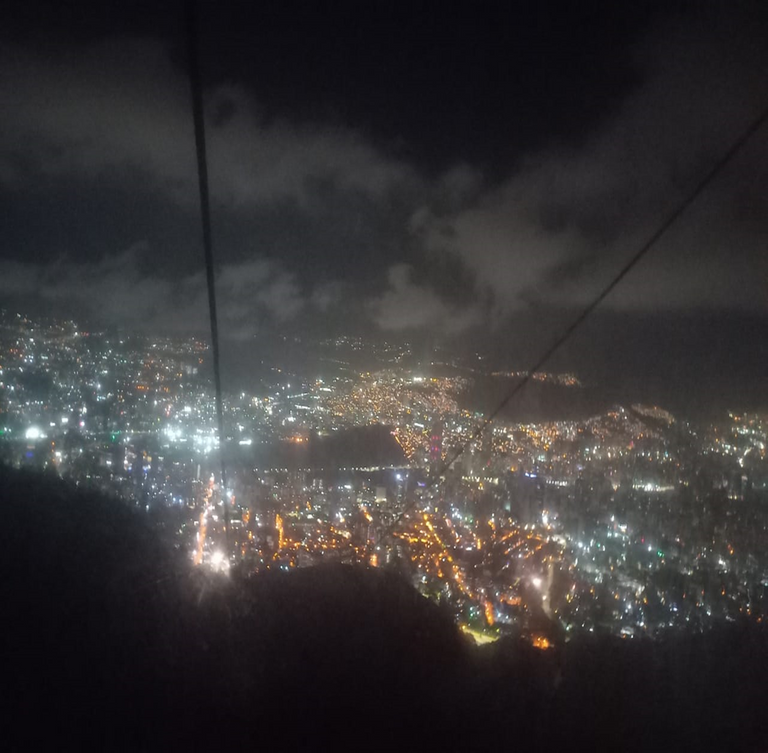
The black and white granite floors, designed by Sanabria, together with the murals by the Catalan artist Abel Valmitjana, who used mosaics, colors, and bronze in the manufacture of his works, make up a work of art to the aesthetic delight of visitors, which should be added the bimural, allegorical to the surrounding vegetation, which covers the walls of both the dance hall with a revolving floor and the large dining room.

The hotel was out of service for many years, so, from 2012 to 2018, a restoration of its facilities was carried out by a multidisciplinary team coordinated by the architect Gregoriy Vertullo, in charge of carrying out an intervention of the work for the recovery of all its spaces, respecting the original design and adapting the current technological requirements regarding hotels.
I have personally visited, in the recent past, a couple of times and have enjoyed, not only of the social facilities of the hotel, but also of a beautiful town called Galipán, where they plant beautiful sunflower flowers, roses of different colors, carnations, coves, among others, in addition to enjoying a succulent lunch in one of the restaurants of the place.

In this building, since December 1963, the lights and curtains on its floors have been used, strategically placed every New Year, to simulate the Christian cross, a symbol of Christmas. For readers interested in technical data on the Hotel's structures, I invite you to visit the website https://iamvenezuela.com/2018/02/el-hotel-humboldt-la-joya-que-corona-el-avila/
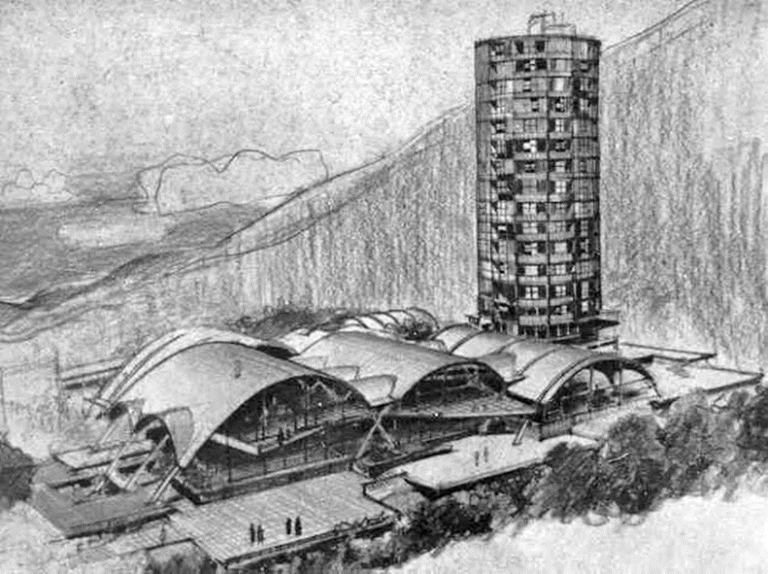
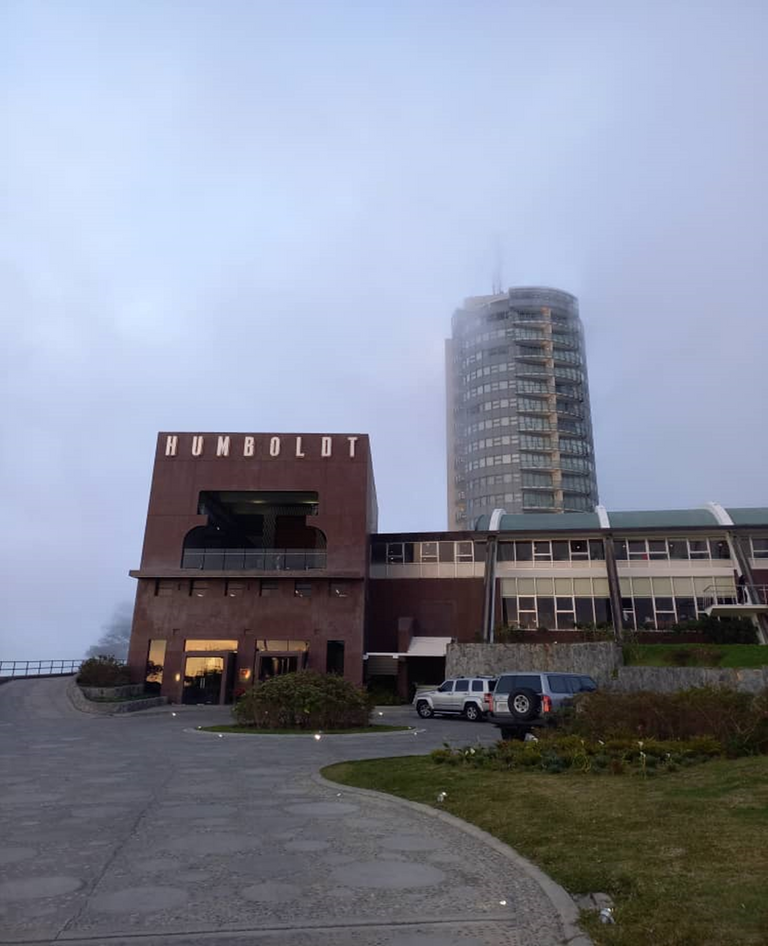
En enero de este año, cuando había amainado la pandemia, mi sobrina Myrel, sus dos hijos y su prometido visitaron el Hotel Humboldt. En la estación del teleférico, ubicada en la urbanización Maripérez, iniciaron su travesía en unas confortables cabinas por espacio de 20 minutos hasta llegar a la cima; como el tramo del teleférico, que debería llegar hasta el lobby del hotel, no está en funcionamiento, tenían dos opciones: abordar un “buggy” que continúa subiendo hasta llegar a esa impresionante estructura de cristal y aluminio: el Hotel Humboldt o llegar a pie a través de unos metros de bulevar, opción seleccionada por mis familiares. Al llegar a los predios del Hotel lo encontraron, como la mayor parte del tiempo, rodeado por espesas nubes, que se abren de pronto para dar paso a inimaginables vistas de la ciudad y el mar caribe. El grupo mayoritario de fotos que comparto con ustedes fueron tomadas por mi sobrina Myrel, solo he considerado pertinente agregar algunas fotos de internet que considero dan una visión más amplia de la edificación.
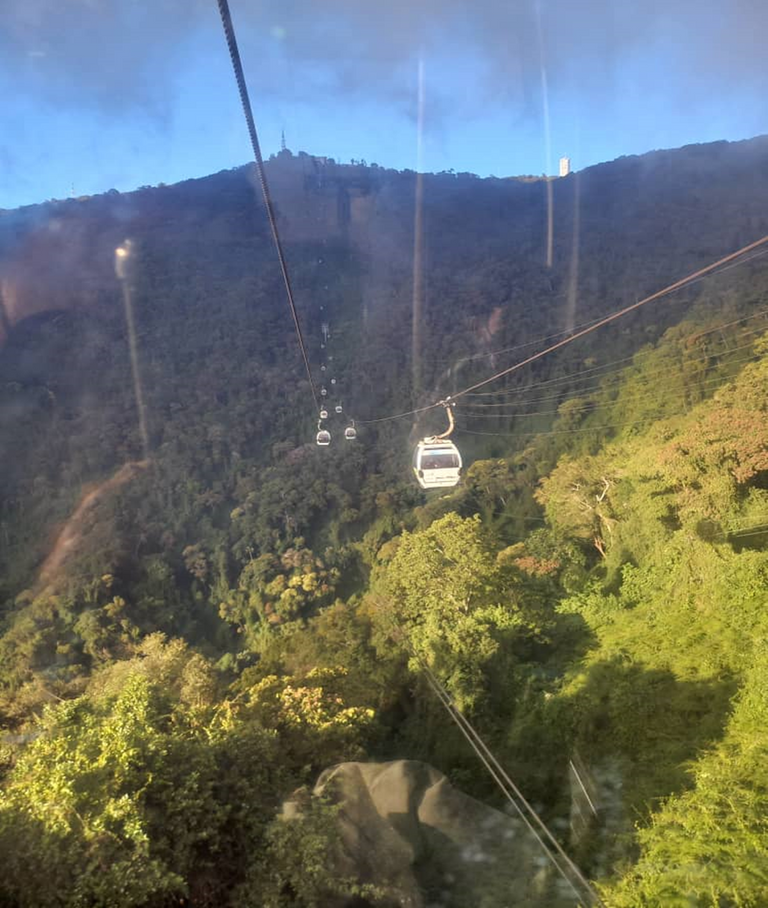
La joya de la corona de la arquitectura venezolana de inicios de la segunda mitad del siglo XX es el Hotel Humboldt, construido a más de 2.200 metros sobre el nivel del mar en lo más alto del Parque Nacional Waraira Repano (El Ávila), la montaña y parque nacional que rodea a la ciudad de Caracas., que puede compararse con un faro desde donde se puede divisar, al norte, la ciudad de Caracas y al sur, el mar Caribe y al mismo tiempo puede ser divisado desde casi cualquier punto de la Capital y desde el mar abierto.
La obra, iniciada y terminada en 1956, fue diseñada por el arquitecto venezolano Tomás Sanabria, uno de los discípulos del funcionalismo en la escuela de diseño de Harvard, donde fue alumno de Walter Gropius, fundador de la Bauhaus; su idea fue construir un complejo hotelero no solo de habitaciones climatizadas y cómodas, sino también, aprovechando la ubicación, un espacio para la diversión y el descanso. Es menester señalar que el mismo año en que se terminó de construir la obra se puso en funcionamiento el teleférico.
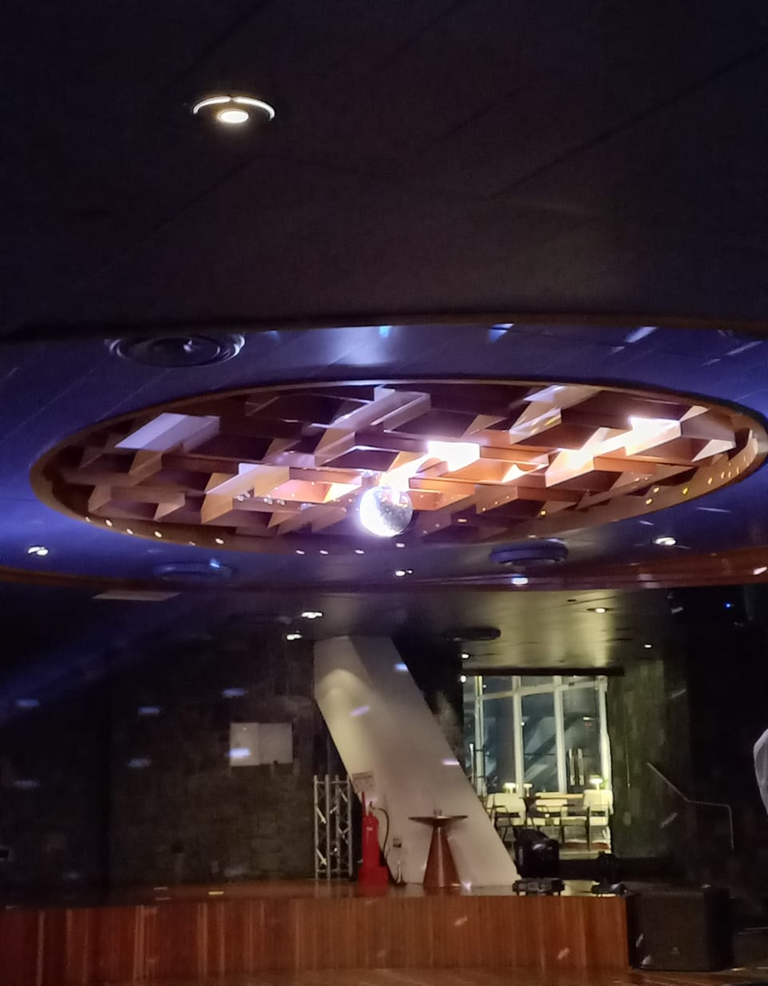
Sanabria, acompañado por los ingenieros Gustavo Larrazabal y Oscar Urreiztieta y un equipo de 600 personas, logró un matrimonio entre la historia y la tecnología cuyo hijo es esta magnífica estructura en forma de torre cilíndrica, que se eleva 60 metros, con 14 plantas y 70 habitaciones y un bar con una vista panorámica de 360 grados. El ingeniero Urreiztieta fue quien realizó los cálculos de la torre cilíndrica con una fachada capaz de resistir los fuerte vientos que azotan el lugar, así como construyó losas colgantes soportadas por tensores. Sanabria, además de ser el creador intelectual de toda la obra, diseñó las lámparas y las ventanas basculantes a fin de facilitar su limpieza. Al mismo tiempo se unió a mentes brillantes de la época, como el escultor y diseñador Cornelis Zitman para la fabricación de los muebles al estilo danés, y del paisajista Roberto Burle Marx quien se ocupó de los jardines de los alrededores del hotel. Cabe recalcar que esta obra se considera toda una proeza arquitectónica, ingenieril y paisajista para el momento de su construcción.
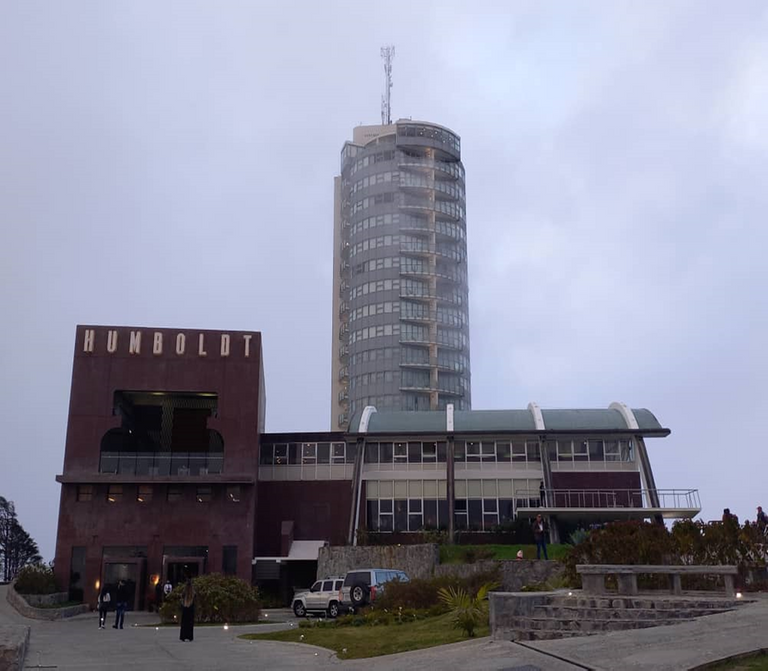
En los primeros pisos del Hotel, se encuentra una edificación destinada a áreas sociales, entretenimiento y servicios, construida con una serie de cubiertas abovedadas y prismáticas. Es significativo que esta obra fuese construida solo en 199 días, aunque necesitó el traslado en mulas y burros de carga de 40 millones de kilogramos del material para su construcción y de camiones que representaban un peligro porque había que sortear lo empinado de los caminos de tierra.
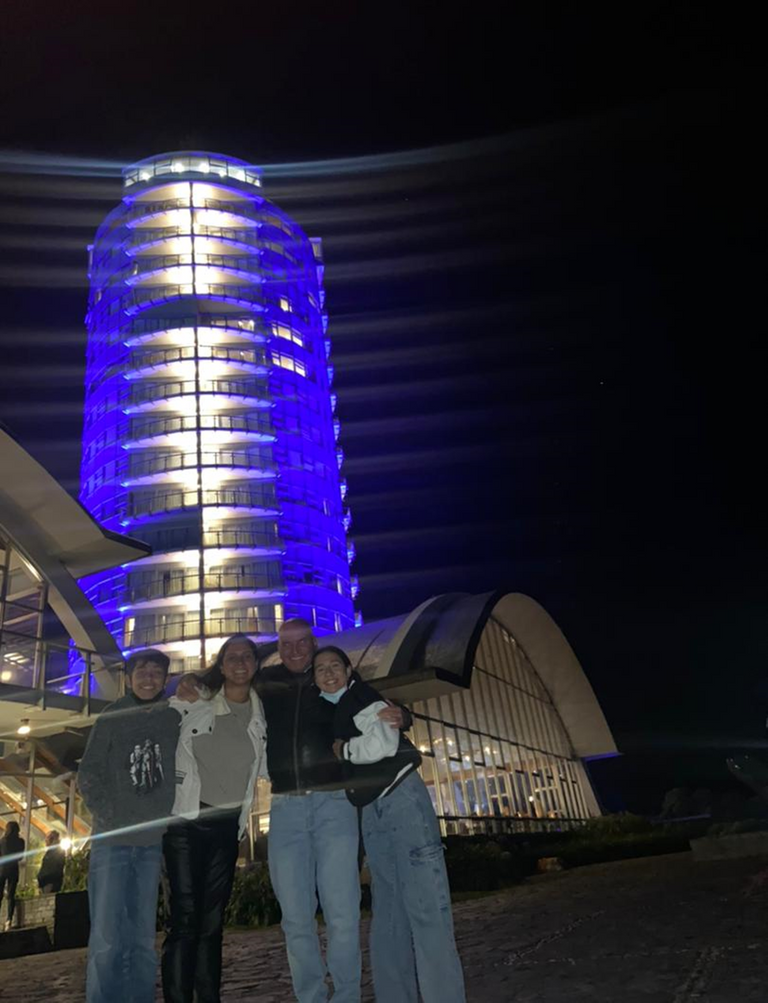
Los pisos de granito blanco y negro, diseñados por Sanabria, conjuntamente con los murales del artista catalán Abel Valmitjana, quien usó mosaicos, colores y bronce en la fabricación de sus obras, configuran una obra de arte para el deleite estético de los visitantes, a lo que habría que sumar el bimural, alegórico a la vegetación circundante, que cubre paredes tanto del salón de baile con pista giratoria, como del amplio comedor.
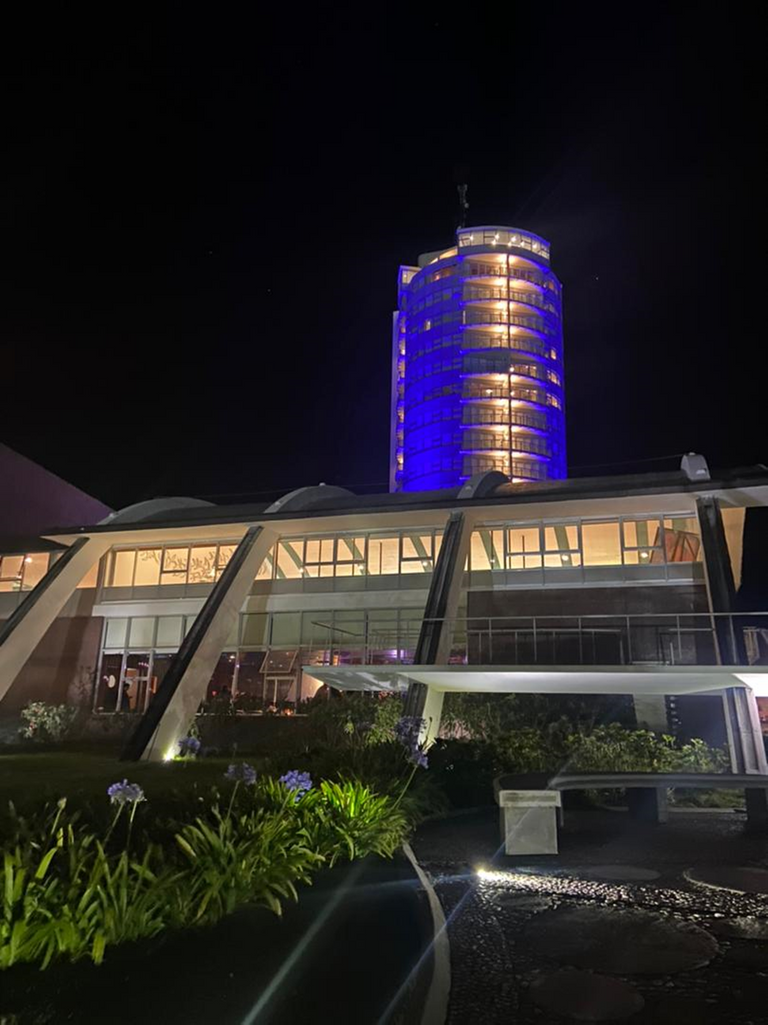
EL hotel estuvo muchos años fuera de servicio por lo que desde 2012 hasta el 2018 se realizó una restauración de sus instalaciones, por parte de un equipo multidisciplinario coordinado por el arquitecto Gregoriy Vertullo, encargado de realizar una intervención de la obra para la recuperación de todos sus espacios, respetando el diseño original y adecuando los requerimientos tecnológicos actuales en lo que atañe a hotelería.
Personalmente he visitado, en el pasado reciente, un par de veces y he disfrutado. no sólo de las instalaciones sociales del hotel, sino también de un bello pueblo llamado Galipán, donde siembran hermosas flores de girasol, rosas de distintos colores, claveles, calas, entre otras, además de disfrutar de un suculento almuerzo en uno de los restaurantes del lugar.
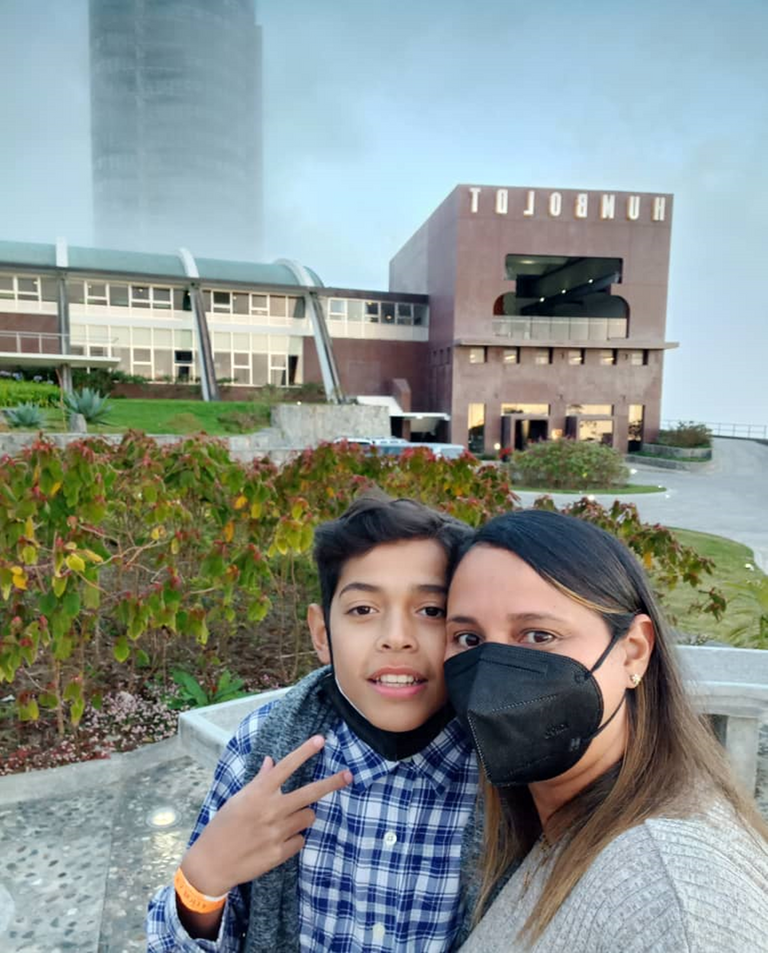
En este edificio, desde diciembre de 1963, se han utilizado las luces y cortinas de sus pisos, colocados estratégicamente cada fin de año, para simular la cruz cristiana, símbolo de la Navidad. Para los lectores interesados en datos técnicos de las estructuras del Hotel, les invito a visitar la página web https://iamvenezuela.com/2018/02/el-hotel-humboldt-la-joya-que-corona-el-avila/
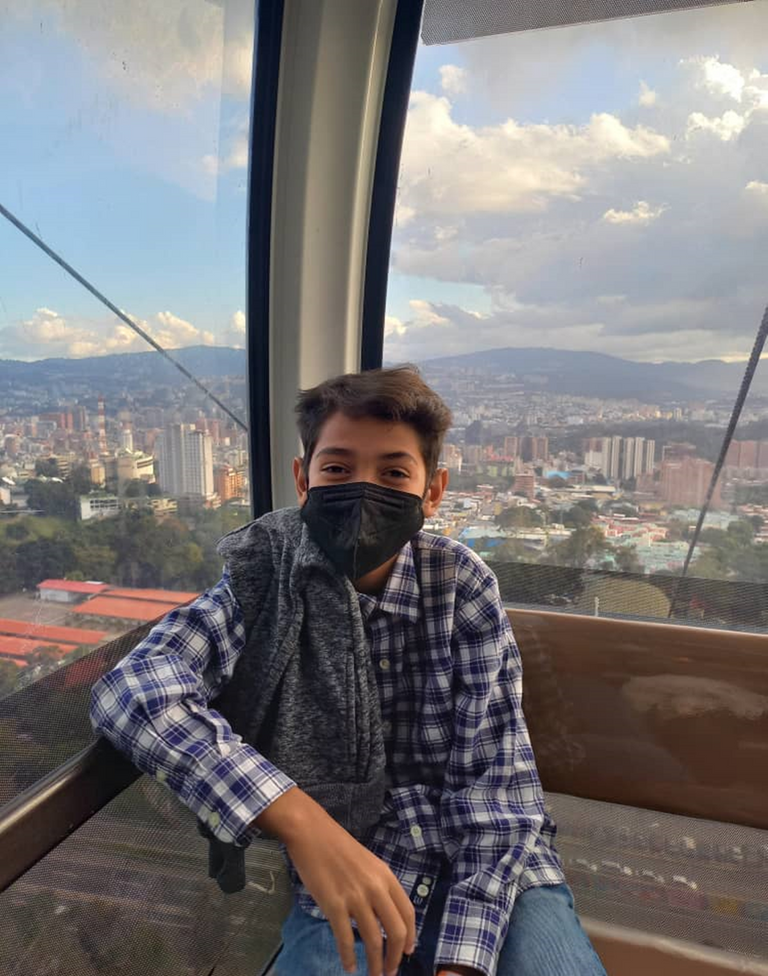
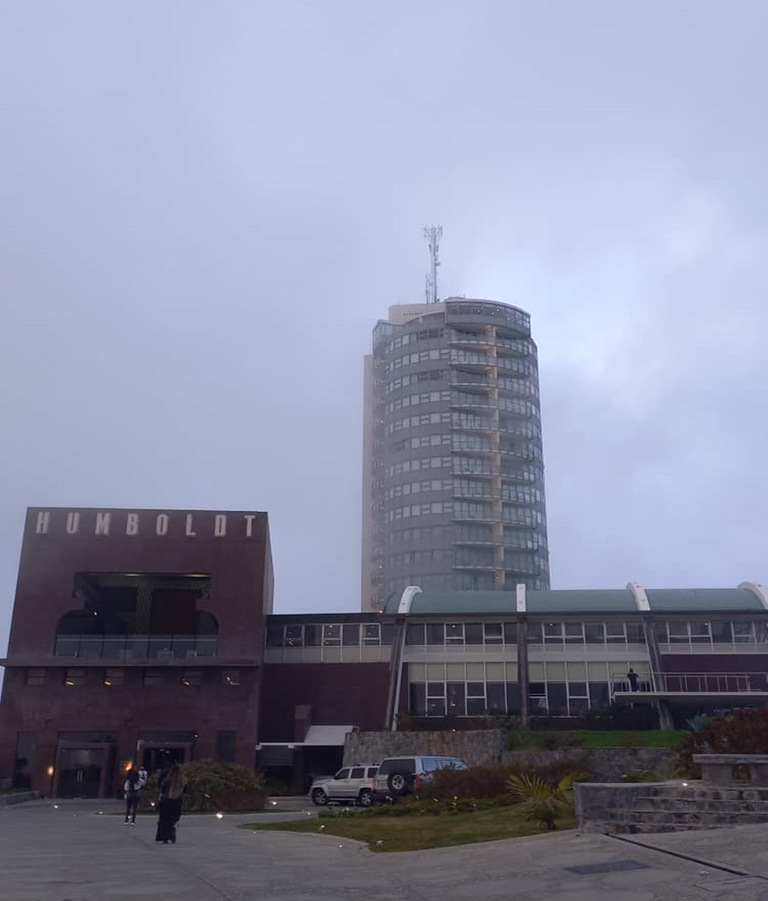
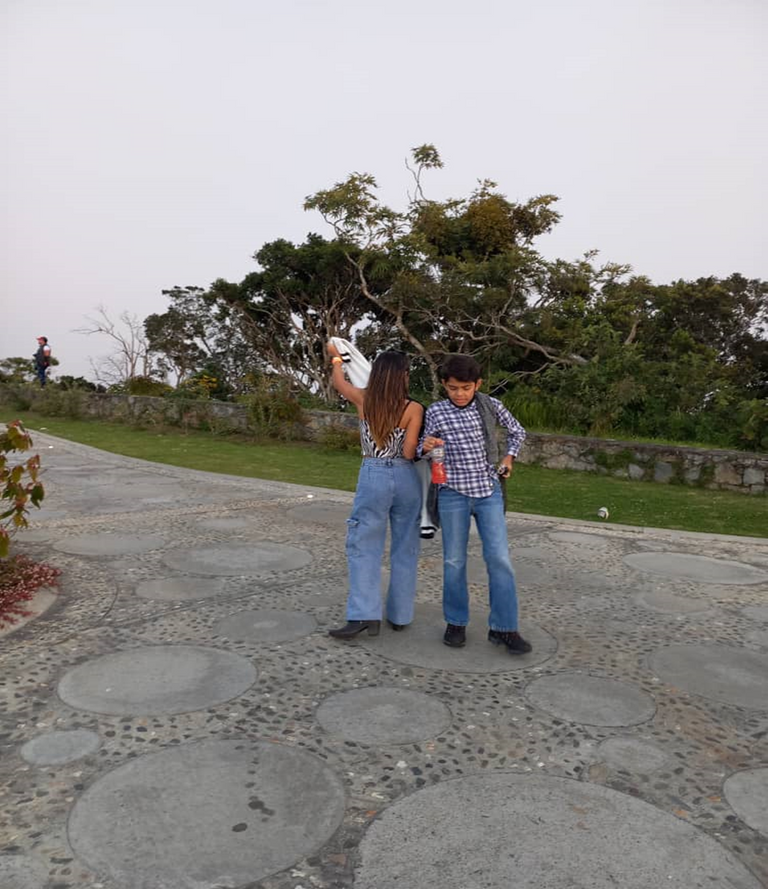
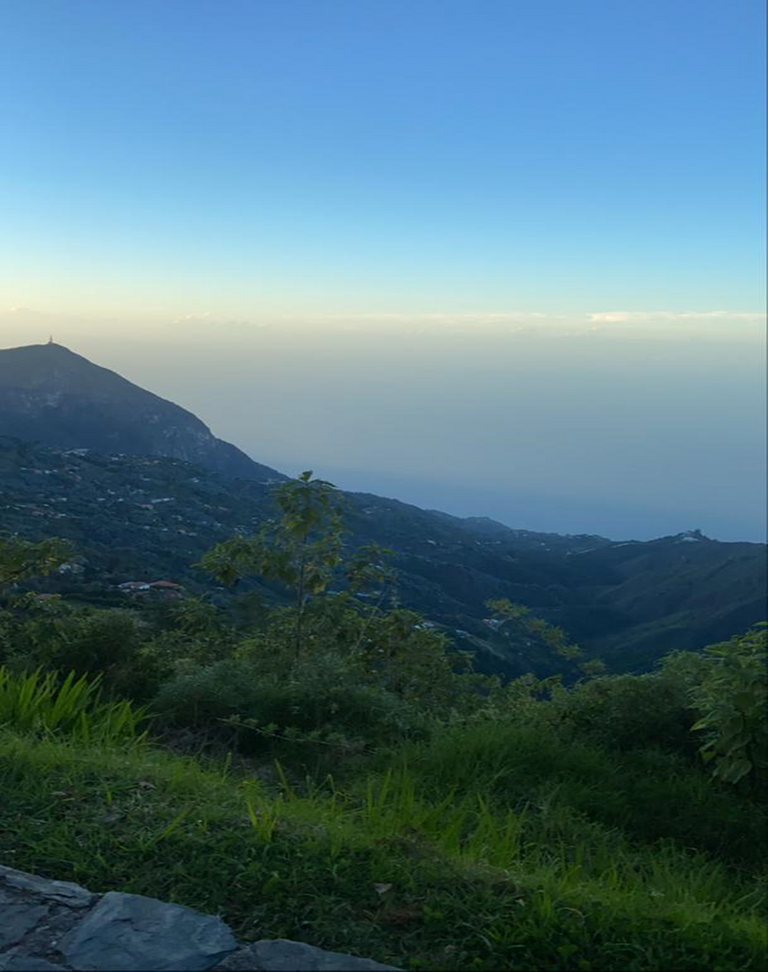
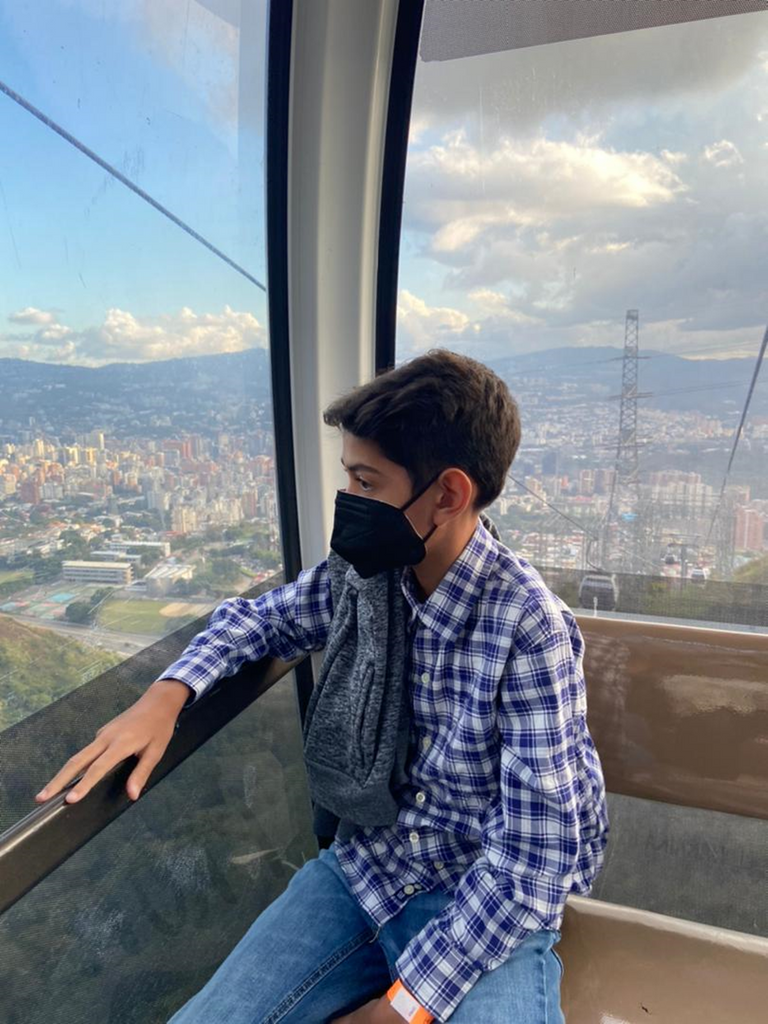
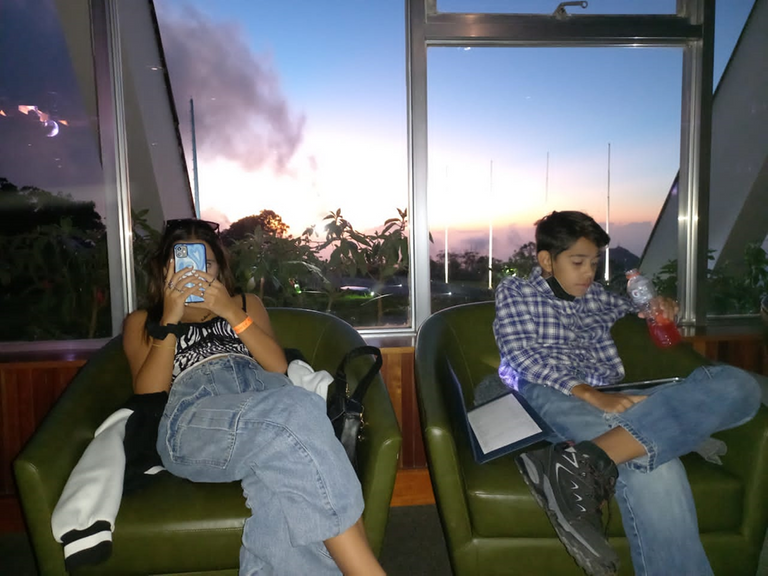

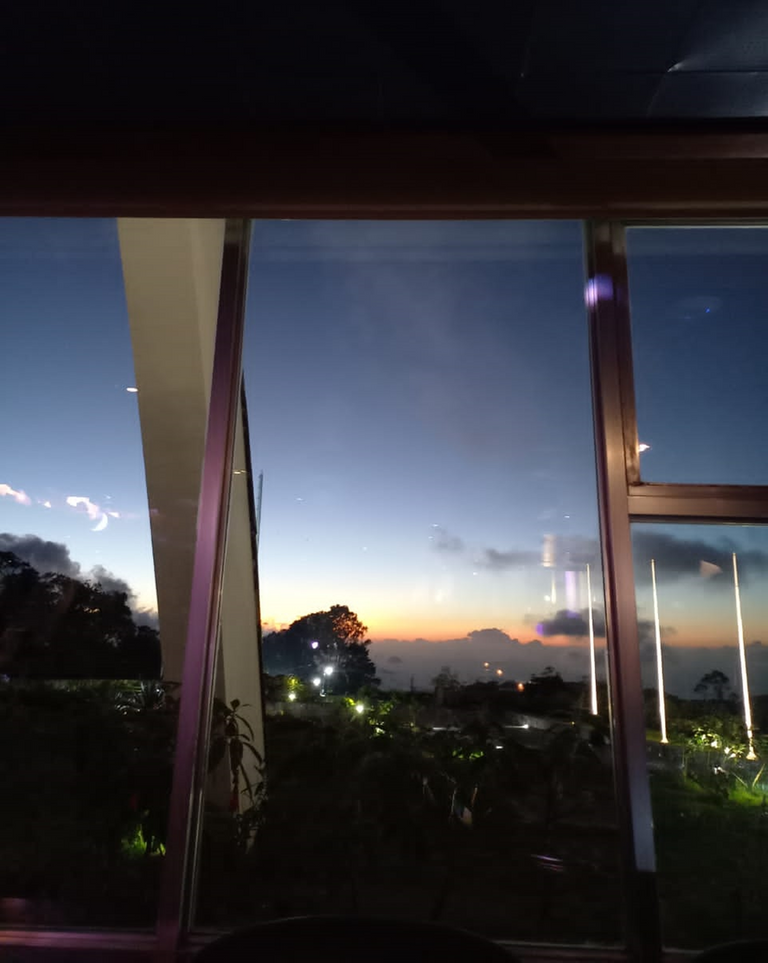
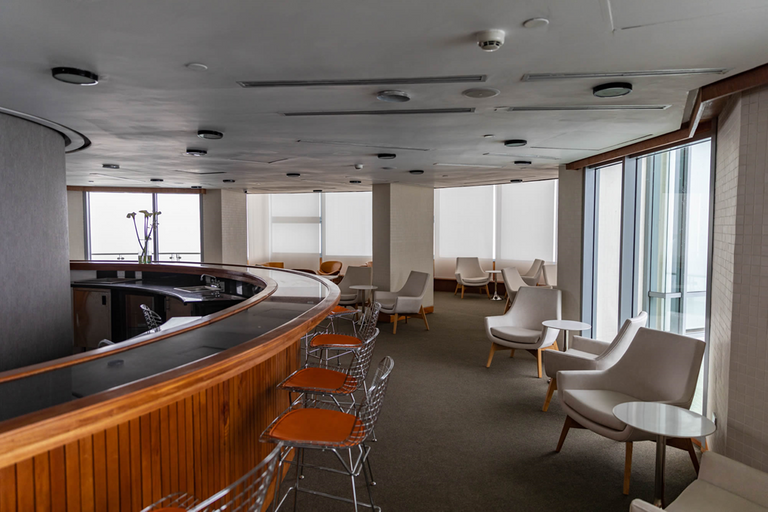

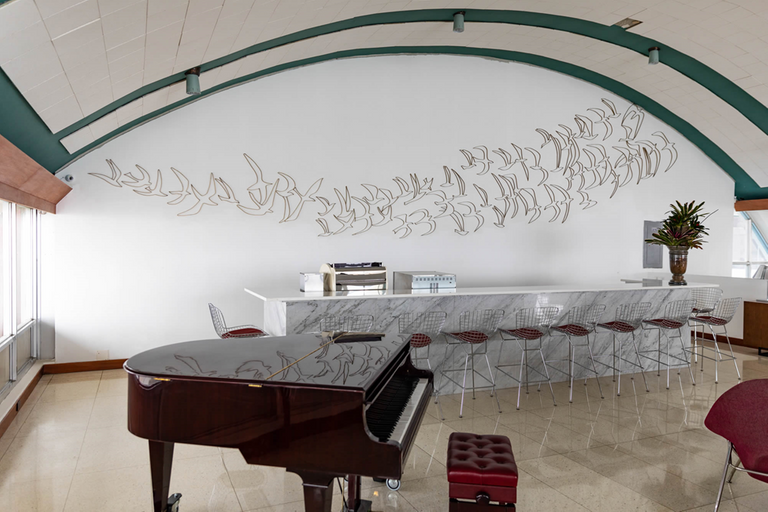
Good morning teacher, friend and neighbor @besamu very good post. The view of the Hotel is extraordinary, observing from that place the city of Caracas and part of La Guaira is a spectacle and the weather a delight. My wife, children and I have been several times in that magical place and the truth is a wonderful experience, from there you can go down to the beautiful and tourist town of Galipán. Greetings and infinite blessings.
Good afternoon dear colleague and friend, I'm sorry I didn't answer you sooner but I was at a medical appointment in Caracas. I am very happy that you and your family have been in this double wonder, both natural and architectural, that is El Ávila National Park. I appreciate your comment. For you and your family, I wish you a happy weekend and I ask you to continue raising your prayers for the end of the European conflict that can continue to cause so much damage.
Buenas tardes estimado colega y amigo, lamento no haberle respondido antes pero estaba en cita médica en Caracas. Me contenta mucho que usted y su familia hayan conocido esta maravilla doble, tanto natural como arquitectónica, que es el Parque Nacional El Ávila. Agradezco su comentario. Para usted y los suyos un feliz fin de semana y le solicito que siga elevando sus oraciones por el fin del conflicto europeo que tanto daño puede seguir causando.
Wow que buena públicación esa edificación es muy sorprendente tiene demasiados detalles para comentarlos en una sola publicación
Hello soychalbed, indeed the structure of the hotel is admirable and several publications are needed to be faithful to its beauty and that of the surrounding park. Happy weekend. I ask you for a prayer for the cessation of the conflict that has us all worried and awake.
Hola soychalbed, efectivamente la estructura del hotel es admirable y se necesitan varias publicacines para ser fiel a su belleza y la del parque circundante. Feliz fin de semana. Le ruego una oración por el cese del conflicto que nos tiene a todos preocupados y en vela.
@tipu curate
Upvoted 👌 (Mana: 8/13) Liquid rewards.
Hello @tipu, I really appreciate your vote. I hope you have a happy weekend, and expect that next week will mean the end of the conflict that threatens to spread throughout the planet.
Hello Claudio, good afternoon, thanks for reading my post. Happy weekend
Hola Claudio, buenas tardes, gracias por leer mi post. Feliz fin de semana
Caracas and its architectural wonders, it is beautiful to be able to appreciate and take into account that we have this architectural level in our country, without a doubt Beautiful, greetings and blessings. @besamu
Hola armasdiaze, muy buenas tardes. Si, los venezolanos debemos estar orgullosos de nuestras bellezas naturales y de las obras arquitectónicas que hemos construido en los últimos siglos. También para usted y los suyos bendiciones y afectuosos saludos. Para despedirme, le ruego eleve sus oraciones por la paz en nuestro convulsionado mundo.
Hello armadiaze, good afternoon. Yes, we Venezuelans should be proud of our natural beauty and the architectural works that we have built in recent centuries. Also for you and your family, I wish you blessings and I send you affectionate greetings. As I bid you farewell, please offer your prayers for peace in our troubled world.
¡Felicitaciones!
1. Invierte en el PROYECTO ENTROPÍA y recibe ganancias semanalmente. Entra aquí para más información.
3. Suscríbete a nuestra COMUNIDAD, apoya al trail de @Entropia y así podrás ganar recompensas de curación de forma automática. Entra aquí para más información sobre nuestro trail.
4. Creación de cuentas nuevas de Hive aquí.
5. Visita nuestro canal de Youtube.
Atentamente
El equipo de curación del PROYECTO ENTROPÍA
Estimados amigos del proyecto Entropía, estimo mucho su apoyo y agradezco me hayan otorgado un ENTROKEN. Les deseo un feliz y provechoso fin de semana y les pido nos acompañen en un ruego por la paz mundial.
Dear friends of the Entropy project, I greatly appreciate your support and thank you for giving me an ENTROKEN. I wish you a happy and fruitful weekend and ask you to join us in a prayer for world peace.
Hello dear friend Benjamin @besamu. Oh wow! Such an impressive location for a luxurious accommodation like this one! With its extremely high altitude, traveling to the Hotel Humboldt via cable car is already a thrilling experience in itself. And cap it off with a comfortable stay at its fine spaces, which would definitely be a complete package for the discerning hotel guest. Fabulous post! Have an enjoyable weekend! 😊
Dear friend Erne, I appreciate your words about my post and fundamentally your generous appreciation of the beauties of my country of origin. I must confess that the first time I went up to the Hotel I arrived scared, believing that, at any moment, the cabin in which we were going was going to come off, and I also did not look down for fear of heights, which I still have despite so many years. Receive a fraternal greeting and my best wishes for a happy and adventurous weekend. I beg you, please raise your prayers so that the incipient war that we are in disappears completely.
Well, if that's the case, I have to congratulate you on conquering your fear of heights. I understand that the cable car ride was such a risky adventure for you, but you took it nonetheless. That was an extremely courageous move on your part, and you got to fully enjoy that exotic hotel in the end. Moreover, let's continue to pray for the immediate termination of the crisis in Europe plus all nations' consideration for world peace. Have a safe and productive weekend! 😊
Congratulations, your post has been added to Pinmapple! 🎉🥳🍍
Did you know you have your own profile map?
And every post has their own map too!
Want to have your post on the map too?
Hello friends of Pinmapple, thanks for your support. Happy weekend.
Congratulations @besamu! You have completed the following achievement on the Hive blockchain and have been rewarded with new badge(s):
Your next target is to reach 800 replies.
You can view your badges on your board and compare yourself to others in the Ranking
If you no longer want to receive notifications, reply to this comment with the word
STOPCheck out the last post from @hivebuzz:
Hello friends of @hivebuzz, thanks for the reminder. I hope to continue overcoming stages within this magnificent community. Please, I beg you to raise your prayers for the end of the conflict that we are currently facing.
De nada @besamu 😊👍 ¡Les deseamos una gran semana!
Congratulations @besamu! We're delighted to specially curate your awesome publication and award it RUNNER-UP in Architecture Brew #57. More power!
Thank you for subscribing to Architecture+Design, an OCD incubated community on the Hive blockchain.
Hello aplusd friend, thank you very much for putting my post as Runner-Up in Architecture Brew # 57. I wish you the best during the week that has just begun.
Greetings @besamu. Thank you for your valuable support, and for your awesome contributions! 😀